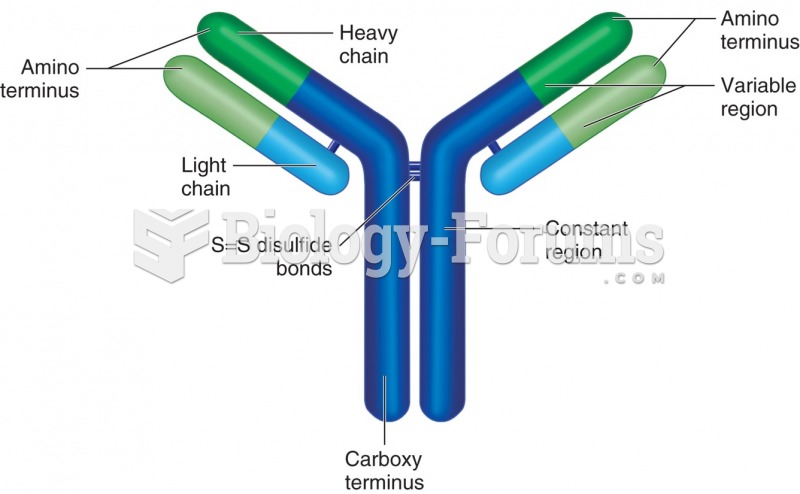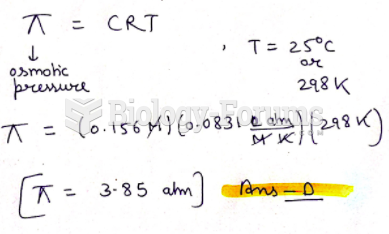|
|
|
Many supplement containers do not even contain what their labels say. There are many documented reports of products containing much less, or more, that what is listed on their labels. They may also contain undisclosed prescription drugs and even contaminants.
Common abbreviations that cause medication errors include U (unit), mg (milligram), QD (every day), SC (subcutaneous), TIW (three times per week), D/C (discharge or discontinue), HS (at bedtime or "hours of sleep"), cc (cubic centimeters), and AU (each ear).
More than 34,000 trademarked medication names and more than 10,000 generic medication names are in use in the United States.
Fungal nail infections account for up to 30% of all skin infections. They affect 5% of the general population—mostly people over the age of 70.
There are more nerve cells in one human brain than there are stars in the Milky Way.
 Rhytidoplasty. This is a common form of plastic surgery in which the skin is pulled and sutured to d
Rhytidoplasty. This is a common form of plastic surgery in which the skin is pulled and sutured to d
 This lithograph by Currier and Ives gives an erroneous impression of the “battle.” Major Robert Ande
This lithograph by Currier and Ives gives an erroneous impression of the “battle.” Major Robert Ande





